
Tuberculosis (TB) is an airborne infectious disease caused by a bacterium called Mycobacterium tuberculosis. TB is a complicated health issue and is often misunderstood.
TB can live in your body for years without symptoms. This is called latent TB infection.
It is estimated that up to 13 million people in the U.S. could have latent TB infection and not experience symptoms yet. Without the appropriate testing and treatment, they are at risk for developing TB disease and then spreading TB to others through the air.
Getting tested and treated for latent TB infection can protect yourself, your friends and family, and your community.

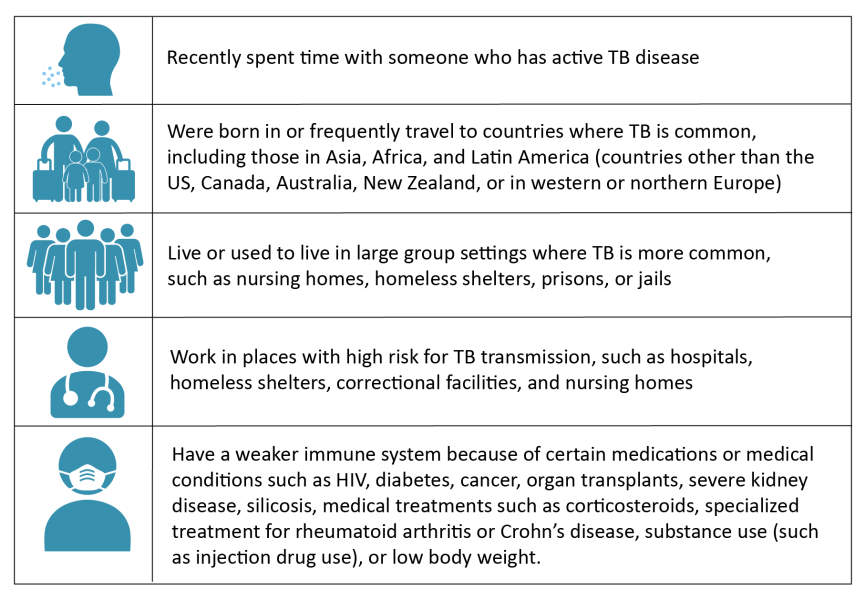
Children, especially those under age 5, also have a higher risk of developing TB disease once infected. Therefore, testing for TB infection in children who may have been exposed to a person with TB disease is important.
You should ask your healthcare provider to test you for TB if you meet any of the risk factors mentioned above.
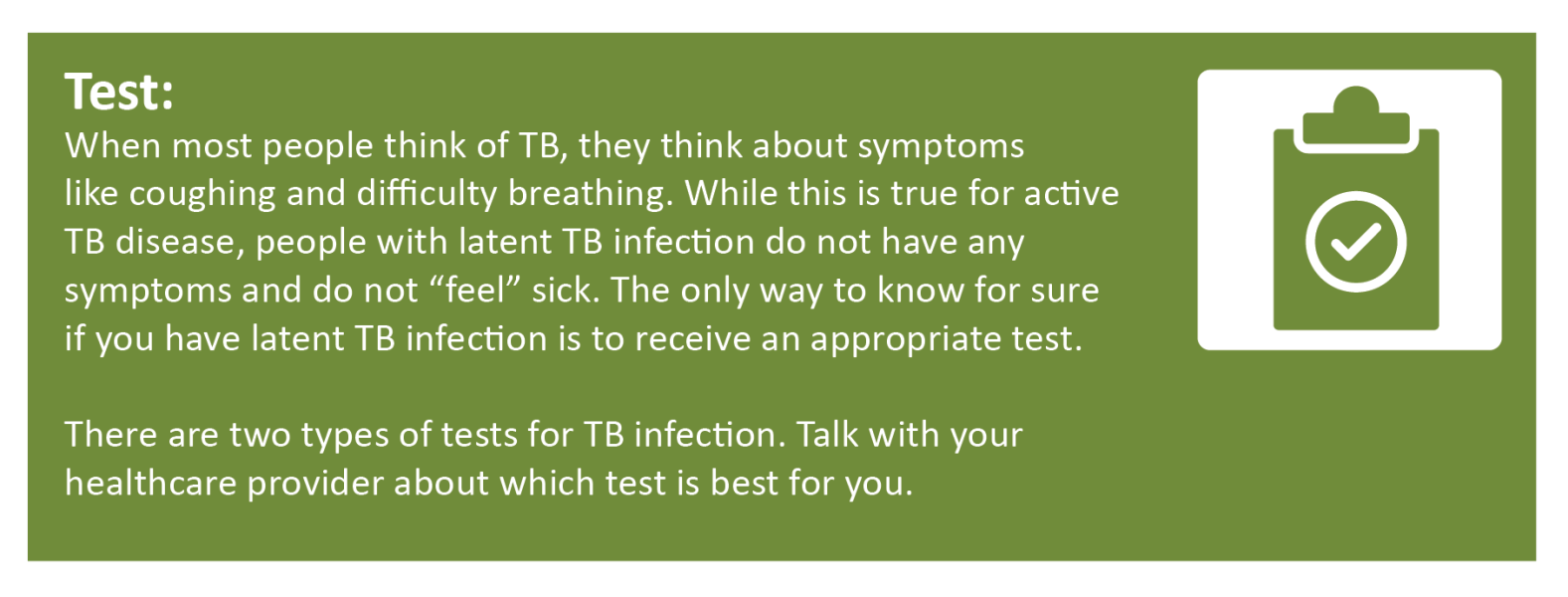
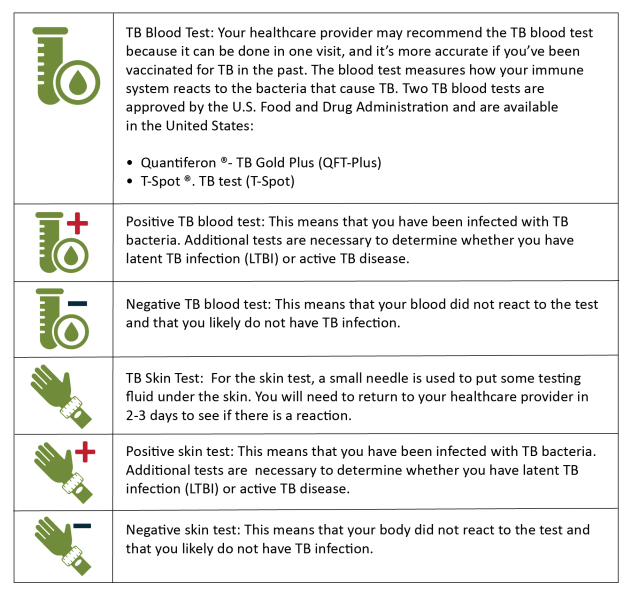
If your exposure to TB bacteria was recent, your TB blood test or TB skin test reaction may not be positive yet. You may need a second test for TB infection 8 to 10 weeks after the last time you spent time with the person who has TB disease. This is because it can take several weeks after infection for your immune system to build a reaction that the test can detect. If your reaction to the second test is negative, you likely do not have TB infection.
Remember, you may be at risk for TB even if you have received the TB vaccine (also called the BCG vaccine) because its protection weakens over time. If you have received the TB vaccine, tell your healthcare provider, especially if you’re getting tested for TB infection. The BCG vaccine is not widely used in the United States but many people born outside of the United States have received the BCG TB vaccine.

If you have a positive reaction to the TB blood test or TB skin test, your healthcare provider will do other tests to see if you have TB disease. These tests usually include a chest x-ray and may also include laboratory testing of the sputum you cough up.
Without treatment, 1 in 10 people with latent TB infection will develop active TB disease.
Completing treatment for latent TB infection is the best way to protect you from developing active TB disease. Talk to your healthcare provider about your medication options.
Remember, people with latent TB infection (LTBI):
- Have no symptoms
- Don't feel sick
- Cannot spread TB bacteria to others, unless they develop active TB disease
- Will usually have a positive TB blood test or positive TB skin test reaction
- May develop TB disease if they do not receive treatment for LTBI

Two TB-related conditions exist: latent TB infection (LTBI) and TB disease. If not treated properly, TB disease can be fatal.
There are important differences between latent TB infection (LTBI) and TB disease. Knowing the differences can help you understand what to expect if you have LTBI or TB disease. The table below explains these key differences side by side.
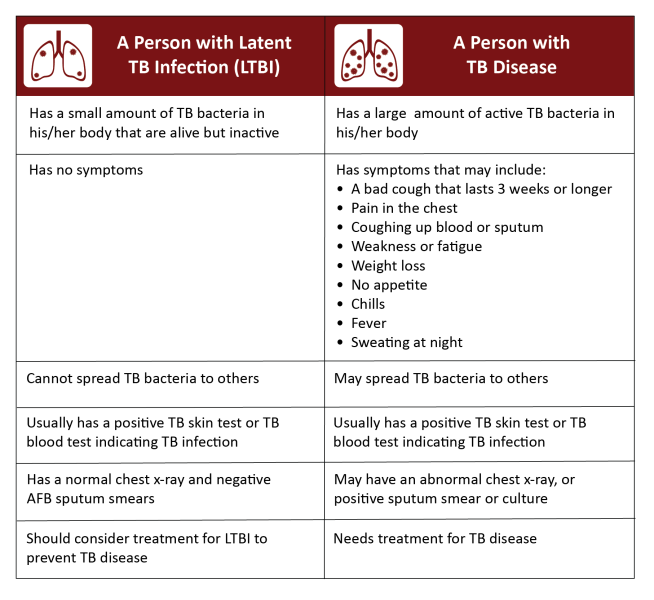
With appropriate testing and treatment, active tuberculosis disease can be curable and preventable.

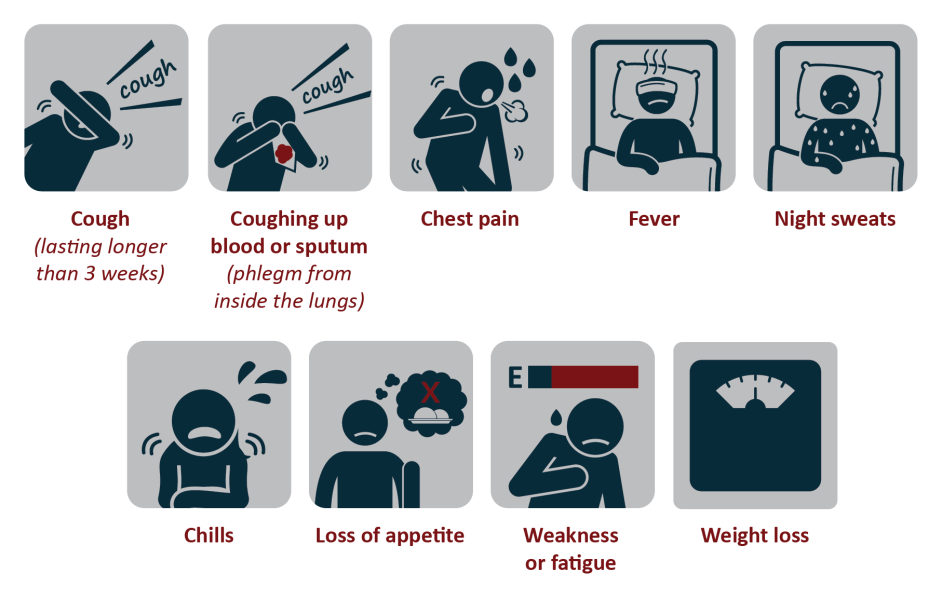
Symptoms of TB disease in other parts of the body may include the following:
-
TB of the kidney may cause blood in the urine
-
TB meningitis may cause headache or confusion
-
TB of the spine may cause back pain
-
TB of the larnyx may cause hoarseness

TB is not spread by:
- Sharing toothbrushes
- Saliva from kissing
- Shaking someone's hand
- Touching bed linens or toilets
- Sharing food, drink, or utensils


Before you would be able to spread TB bacteria to others, you would have to breathe in TB bacteria and become infected. Then, the bacteria would have to multiply in your body and cause infectious TB disease. At this point, you could possibly spread TB bacteria to others.
In most people who breathe in TB bacteria and become infected, the body can fight the bacteria to stop them from growing. The bacteria become inactive, but they remain alive in the body and can become active later. This is called latent TB infection (LTBI). People with LTBI cannot spread TB bacteria to others. People who have LTBI can be treated to prevent TB disease.











